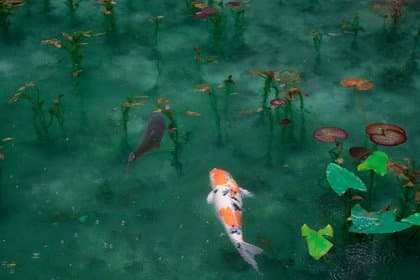Are Carp Bottom Feeders? Understanding the Feeding Habits of Carp
When it comes to fishing for carp, understanding their feeding habits is crucial for increasing your chances of success. In this article, we will explore the feeding habits of carp and answer the question "Are carp bottom feeders?" Whether you're a beginner or an experienced angler, you'll learn everything you need to know to plan your next carp fishing trip.

When it comes to fishing for carp, understanding their feeding habits is crucial for increasing your chances of success. One question that is often asked is "Are carp bottom feeders?" In this article, we will explore the feeding habits of carp and answer this question in detail.
What are Carp?
Carp are a freshwater fish that are native to Europe and Asia. They have been introduced to many other countries, including the United States, Canada, and Australia. They are known for their large size and can grow up to 4 feet in length and weigh over 100 pounds. They are also known for their elusive nature and can be challenging to catch.
Are Carp Bottom Feeders?
Carp are opportunistic feeders, which means that they will eat a variety of food sources depending on what is available. They are known to feed on plants, insects, crustaceans, and small fish. In terms of feeding behavior, carp are considered benthic feeders, which means that they primarily feed on the bottom of the water body. They use their sensitive barbels, or whiskers, to locate food in the sediment and their benthic feeding behavior is determined by their habitat and the food availability.
However, it's important to note that carp are not limited to only feeding on the bottom. They are also known to feed near the surface, especially in the warmer months when the water is warmer and they are more active. They are also known to feed on floating debris such as leaves and twigs. This makes them opportunistic feeders, they adapt their feeding habits based on the food availability and the water conditions.
How to Target Carp
To target carp, it's important to understand their feeding habits and to adapt your fishing techniques accordingly. In the warmer months, when the water is warmer and the carp are more active, it's best to fish in shallower waters near the surface and around vegetation, weed beds, and lily pads. Use brightly colored baits and fish near the surface to increase your chances of a bite.
In the colder months, when the water is cooler and the carp are less active, it's best to fish in deeper waters around underwater features like drop-offs, channels, and points. Use natural colored baits and fish on or near the bottom to increase your chances of a bite. Additionally, pay attention to the weather and water temperature, as these can affect the behavior of the carp.
It's also important to consider the smell of the bait, as carp have a highly developed sense of smell which plays a significant role in their feeding behavior. Studies have shown that carp have a high number of olfactory receptors in their nose, which allows them to detect a wide range of chemical compounds in the water. By using baits with certain smells, such as sweet or fermented smells, you can increase your chances of catching carp.
Conclusion
In short, carp are primarily bottom feeders, but they are also opportunistic feeders and can adapt their feeding habits based on the food availability and the water conditions. To target carp effectively, it's important to understand their feeding habits, adapt your fishing techniques accordingly, and consider the smell of the bait. By doing so, you can increase your chances of success when fishing for carp.
Happy fishing!
No comments yet, be the first to share your thoughts!
Newsletter
Sign up for our newsletter and stay up-to-date on the latest tips, tricks, and techniques in carp fishing. From beginner to expert, our newsletter offers something for every level of angler. Do not miss out on exclusive content, product reviews and fishing reports that will help you catch more carp.
Related Posts
The Fascinating World of F1 Carp: A Comprehensive Guide
almost 3 years ago
Introduction to Butterfly Koi: The Majestic and Colorful Fish
almost 3 years ago
The Impact of Weather on Carp Fishing: A Guide to Fishing in Different Conditions
over 1 year ago
5 Best Fishing Throwing Sticks for Carp Fishing
almost 3 years ago
How to Make Homemade Carp Fishing Boilies with Pre-Digested Fish Meal and Milk Protein Blend
almost 3 years ago
Bighead Carp: Biology, Distribution, and Ecological Impact
almost 3 years ago